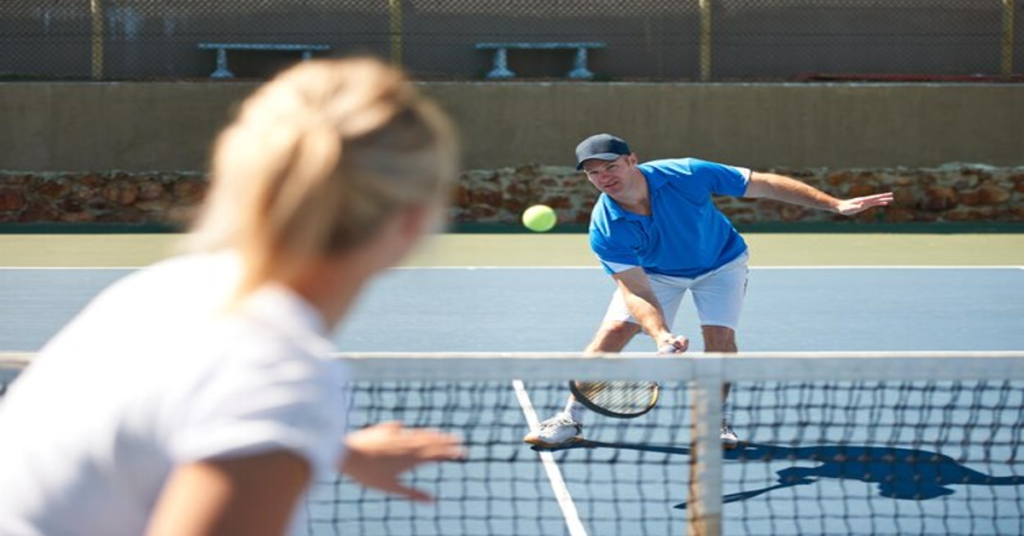Pickleball has surged in popularity across the globe, bringing together players of all ages in friendly yet competitive matches. One essential aspect of any successful pickleball tournament is its bracket system. Whether you are a seasoned player or just entering the competitive world of pickleball, understanding the structure of pickleball brackets can significantly impact your strategy, performance, and overall experience.
In this comprehensive guide, we will explore the types of pickleball brackets, how they work, key strategies for success, and tips on organizing a well-structured tournament. We’ll also dive into common FAQs to help you become a more informed player or tournament organizer.
What Are Pickleball Brackets?
Pickleball brackets refer to the tournament structures used to determine matchups, winners, and rankings in competitive play. These brackets are essential for managing tournaments efficiently, ensuring fair play, and maintaining an engaging environment for both players and spectators.
A bracket system helps organize players in various formats, such as knockout rounds, round-robin games, and consolation brackets, depending on the tournament’s size and level of competition.
Types of Pickleball Tournament Brackets
The type of bracket system used in a pickleball tournament can vary based on factors such as the number of participants, skill levels, and time constraints. Here are the most common bracket formats:
1. Single-Elimination Bracket
A single-elimination bracket is one of the most straightforward and commonly used formats in sports tournaments. In this format:
- Players compete in matches, and the loser of each match is immediately eliminated.
- Winners advance to the next round until a champion is determined.
Advantages:
- Quick and easy to organize.
- Suitable for smaller tournaments or time-limited events.
Disadvantages:
- Players get only one chance; if they lose, they’re eliminated.
- May not provide adequate playing time for participants.
2. Double-Elimination Bracket
Double-elimination tournaments provide players with a second chance after an initial loss. In this format:
- Players enter the “winners bracket” initially.
- If a player loses a match, they are sent to the “losers bracket.”
- A player is only eliminated after losing twice.
- The winner of the losers bracket faces the winner of the winners bracket in the final match.
Advantages:
- Fairer competition, as players have a chance to recover from an early loss.
- Provides more playing time for participants.
Disadvantages:
- Can take longer to complete.
- More complex to manage compared to single-elimination formats.
3. Round-Robin Bracket
A round-robin format ensures that each player or team competes against all other participants. This is commonly used for tournaments that prioritize maximum playing time.
How it works:
- Players are divided into groups, and everyone in a group plays against each other.
- Rankings are determined by win-loss records, and sometimes by point differentials.
Advantages:
- Every player gets to play multiple matches.
- Ensures fairness by providing a comprehensive assessment of skills.
Disadvantages:
- Can be time-consuming for large groups.
- May require tiebreaker rules to determine final rankings.
4. Consolation Bracket (Loser’s Bracket)
A consolation or loser’s bracket offers eliminated players a chance to continue playing for lower-tier rankings or consolation prizes. It can be used in conjunction with single or double-elimination formats.
Advantages:
- Keeps players engaged even after a loss.
- Provides more playing opportunities.
Disadvantages:
- May require additional time and resources.
- Can be confusing if not properly managed.
5. Pool Play Followed by Bracket Play
In this hybrid format, players are initially divided into pools and play round-robin matches within each pool. The top players from each pool then advance to an elimination bracket.
Advantages:
- Combines the benefits of both round-robin and elimination formats.
- Ensures everyone gets ample playing time before entering knockout rounds.
Disadvantages:
- Complex and time-consuming.
- Requires careful scheduling to avoid conflicts.
Key Strategies for Success in Pickleball Tournaments
Understanding the bracket format is crucial, but equally important are the strategies you employ during the tournament. Here are some tips to help you excel:
1. Study the Bracket Beforehand
Familiarize yourself with the bracket structure and potential matchups. Knowing your path to the finals can help you prepare mentally and develop a game plan for challenging opponents.
2. Warm-Up and Practice
A proper warm-up is essential before every match to loosen your muscles and improve your reflexes. Spend time practicing with your doubles partner to fine-tune your coordination.
3. Manage Your Energy
In formats like double-elimination and round-robin, you may play multiple matches in a day. Conserve energy by pacing yourself and staying hydrated.
4. Focus on Mental Toughness
Tournaments can be mentally draining, especially when you’re facing high-pressure situations or recovering from a loss. Stay calm, analyze your performance, and adjust your strategy as needed.
5. Communicate Effectively in Doubles
For doubles matches, clear communication with your partner is crucial. Discuss your strategy, positioning, and signals before and during the game.
6. Adapt to Opponents’ Playstyles
Observe your opponents and adjust your strategy accordingly. If they have a strong baseline game, consider moving them closer to the net. If they prefer slow rallies, increase the pace to put them under pressure.
7. Utilize Timeouts and Breaks
If allowed, take advantage of timeouts to regroup and strategize. Use breaks between sets or matches to recover physically and mentally.
How to Organize a Pickleball Tournament with Effective Brackets
Organizing a pickleball tournament requires careful planning, especially when choosing the appropriate bracket format. Follow these steps for a successful event:
1. Determine the Number of Participants
The bracket format largely depends on how many players or teams are participating. For small tournaments, single or double-elimination brackets may suffice. Larger tournaments may benefit from round-robin or pool play formats.
2. Set Clear Rules and Guidelines
Clearly communicate the tournament’s rules, including scoring systems, match durations, tiebreaker criteria, and eligibility requirements.
3. Create a Schedule
Develop a detailed schedule outlining match times and court assignments. Ensure there is enough time between matches for players to rest and for potential delays.
4. Use Tournament Management Software
Consider using software like Pickleball Brackets, Challonge, or Tournament Manager to automate bracket generation, scoring, and results tracking.
5. Provide Referees or Volunteers
Have referees or volunteers available to monitor matches, resolve disputes, and assist with scoring.
6. Prepare for Contingencies
Account for potential issues such as weather delays (if played outdoors), player injuries, or equipment malfunctions.
7. Ensure Player Safety and Comfort
Provide adequate water stations, seating areas, and first aid facilities to ensure players have a safe and enjoyable experience.
Online Tools and Apps for Managing Pickleball Brackets
Several online tools and apps can help players, organizers, and spectators stay up to date with tournament progress:
- Pickleball Brackets: Specifically designed for pickleball tournaments, this platform helps organizers create and manage brackets with ease.
- Challonge: A popular choice for many sports, offering single, double, and round-robin bracket options.
- Scoreholio: Ideal for smaller tournaments, with live scoring features and player notifications.
- PickleballTournaments.com: Offers comprehensive tournament listings, registration, and bracket management.
The Importance of Fair Seeding and Draws
Fair seeding ensures that top players don’t face each other in the early rounds, promoting competitive balance throughout the tournament. Organizers should consider player rankings, past performances, and skill levels when seeding participants.
Random draws can also be used for recreational tournaments to create an element of surprise. However, for more competitive events, a combination of seeding and random draws is often preferred.
Conclusion
Pickleball brackets are more than just a means of organizing matches—they play a vital role in the tournament’s success and the players’ experiences. Whether you’re a player looking to improve your performance or an organizer planning a smooth event, understanding the nuances of different bracket formats is essential.
With careful preparation, strategy, and the right mindset, players can navigate the competitive world of pickleball tournaments with confidence. At the same time, well-organized brackets ensure fair play and keep the spirit of competition alive.
FAQs
1. What is the most common bracket format in pickleball tournaments?
Double-elimination is one of the most commonly used formats, as it provides players with a second chance after a loss.
2. How long does a pickleball tournament typically last?
The duration varies based on the number of participants and bracket format. Smaller events can last a few hours, while larger tournaments may take several days.
3. Can beginners participate in competitive pickleball tournaments?
Yes! Many tournaments have divisions based on skill level, allowing beginners to compete against players of similar abilities.
4. What happens in a tie during round-robin play?
Tiebreakers are typically decided based on factors like point differentials, head-to-head match results, or total points scored.
5. Is there a limit to the number of participants in a pickleball tournament?
There is no fixed limit, but organizers should consider time constraints, available courts, and resources when setting a maximum number of participants.
6. How do I find upcoming pickleball tournaments in my area?
Websites like PickleballTournaments.com, local pickleball clubs, and community centers often list upcoming events and registration details.







